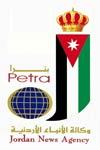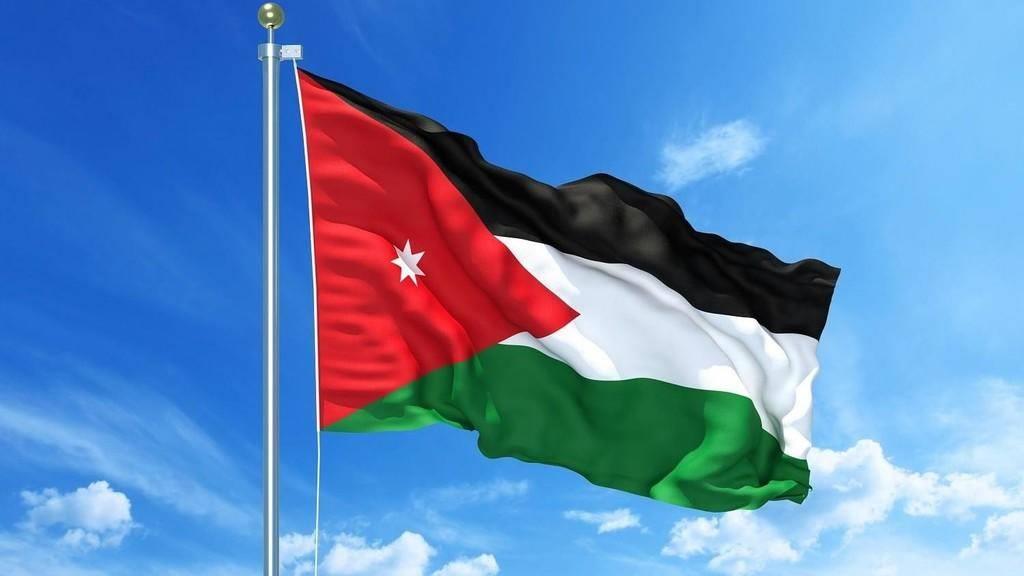Jordan Q2 GDP Up 2.8%, 17% Higher Yoy, Economy Weathers Regional Headwinds
(MENAFN- Jordan News Agency)
- Expansion Achieved Despite Regional Headwinds and Geopolitical Risk Premiums
- Broad-Based Gains Signal Momentum Across Real Economy Sectors
- Growth Profile Reflects Structural Strength and Economic Resilience
- Agriculture and Manufacturing as Core Growth Engines
- Exports Up 8.8%, Tourism Revenue Surpasses $5.3 Billion
- FDI Inflows Rise 14% as Amman Stock Exchange Reaches 15-Year High
- Reserves Near $23 Billion Amid Strengthened External Balances
Amman, Sep. 30 (Petra) - Jordan's economy expanded by 2.8% in the second quarter of 2025, translating into a 17% year-on-year uplift versus the 2.4% growth registered in Q2 2024, according to estimates by the Department of Statistics.
The growth print highlights the Kingdom's macroeconomic resilience amid intensifying regional headwinds, including the fallout of the Iran–Israel war and ongoing global supply-side frictions. Proactive fiscal discipline, monetary stability, and structural adjustment measures provided the necessary buffers, enabling Jordan to not only absorb external shocks but also translate them into tailwinds for reform-driven expansion.
The growth composition points to a broad-based recovery. Agriculture surged 8.6%, supported by rising export demand, while manufacturing posted 5% growth, underscoring the competitive repositioning of industrial output. Utilities (electricity and water) expanded 4.9%, social and personal services rose 4%, and transport, storage, and telecom continued to provide a steady growth anchor.
From a value-added perspective, financial services, insurance, and real estate remained the single largest GDP contributor at 18.3%, marginally outpacing manufacturing at 18.2%. Government services accounted for 12.6%, while wholesale/retail trade, hotels, and restaurants made up 9.5%, and transport, storage, and telecom contributed 9%. This composition illustrates the dual engine of services and industry driving Jordan's medium-term trajectory.
Agriculture and manufacturing not only delivered above-trend expansion but also demonstrated the elasticity of Jordan's productive base, reinforcing their role in sustaining export competitiveness, attracting investment, and reducing external vulnerabilities.
National exports advanced 8.5% year-on-year in July, while tourism inflows surged 7.5% in the first eight months to $5.3 billion, driven by a 14.9% increase in arrivals. This reflects both cyclical recovery and Jordan's strengthening position as a regional services hub.
The Central Bank's foreign exchange reserves climbed close to $23 billion, underpinning currency stability, sovereign creditworthiness, and policy credibility. Inflation remained contained, while labor market pressures showed signs of easing, enhancing macro stability metrics.
On the investment front, FDI inflows expanded 14% in Q1 2025, signaling sustained foreign investor appetite despite regional volatility. The Amman Stock Exchange breached the 3,000-point threshold, its strongest performance in 15 years, with foreign holdings exceeding $6 billion year-to-date. Corporate dynamism was also evident, with new company registrations up 17%, licensed building space rising 19%, and apartment demand advancing 4% in the first third of the year.
- Expansion Achieved Despite Regional Headwinds and Geopolitical Risk Premiums
- Broad-Based Gains Signal Momentum Across Real Economy Sectors
- Growth Profile Reflects Structural Strength and Economic Resilience
- Agriculture and Manufacturing as Core Growth Engines
- Exports Up 8.8%, Tourism Revenue Surpasses $5.3 Billion
- FDI Inflows Rise 14% as Amman Stock Exchange Reaches 15-Year High
- Reserves Near $23 Billion Amid Strengthened External Balances
Amman, Sep. 30 (Petra) - Jordan's economy expanded by 2.8% in the second quarter of 2025, translating into a 17% year-on-year uplift versus the 2.4% growth registered in Q2 2024, according to estimates by the Department of Statistics.
The growth print highlights the Kingdom's macroeconomic resilience amid intensifying regional headwinds, including the fallout of the Iran–Israel war and ongoing global supply-side frictions. Proactive fiscal discipline, monetary stability, and structural adjustment measures provided the necessary buffers, enabling Jordan to not only absorb external shocks but also translate them into tailwinds for reform-driven expansion.
The growth composition points to a broad-based recovery. Agriculture surged 8.6%, supported by rising export demand, while manufacturing posted 5% growth, underscoring the competitive repositioning of industrial output. Utilities (electricity and water) expanded 4.9%, social and personal services rose 4%, and transport, storage, and telecom continued to provide a steady growth anchor.
From a value-added perspective, financial services, insurance, and real estate remained the single largest GDP contributor at 18.3%, marginally outpacing manufacturing at 18.2%. Government services accounted for 12.6%, while wholesale/retail trade, hotels, and restaurants made up 9.5%, and transport, storage, and telecom contributed 9%. This composition illustrates the dual engine of services and industry driving Jordan's medium-term trajectory.
Agriculture and manufacturing not only delivered above-trend expansion but also demonstrated the elasticity of Jordan's productive base, reinforcing their role in sustaining export competitiveness, attracting investment, and reducing external vulnerabilities.
National exports advanced 8.5% year-on-year in July, while tourism inflows surged 7.5% in the first eight months to $5.3 billion, driven by a 14.9% increase in arrivals. This reflects both cyclical recovery and Jordan's strengthening position as a regional services hub.
The Central Bank's foreign exchange reserves climbed close to $23 billion, underpinning currency stability, sovereign creditworthiness, and policy credibility. Inflation remained contained, while labor market pressures showed signs of easing, enhancing macro stability metrics.
On the investment front, FDI inflows expanded 14% in Q1 2025, signaling sustained foreign investor appetite despite regional volatility. The Amman Stock Exchange breached the 3,000-point threshold, its strongest performance in 15 years, with foreign holdings exceeding $6 billion year-to-date. Corporate dynamism was also evident, with new company registrations up 17%, licensed building space rising 19%, and apartment demand advancing 4% in the first third of the year.

Legal Disclaimer:
MENAFN provides the
information “as is” without warranty of any kind. We do not accept
any responsibility or liability for the accuracy, content, images,
videos, licenses, completeness, legality, or reliability of the information
contained in this article. If you have any complaints or copyright
issues related to this article, kindly contact the provider above.
Most popular stories
Market Research

- Cregis Releases 2025 Cryptocurrency Wallet Analysis
- Origin Summit Announces Wave 3: Animation Powerhouse Maggie Kang To Join Programming Lineup
- Falcon Finance Unveils $FF Governance Token In Updated Whitepaper
- Hola Prime Expands Its Platform Ecosystem With Next-Gen Tradelocker
- LYS Labs Moves Beyond Data And Aims To Become The Operating System For Automated Global Finance
- Tradesta Becomes The First Perpetuals Exchange To Launch Equities On Avalanche






















Comments
No comment